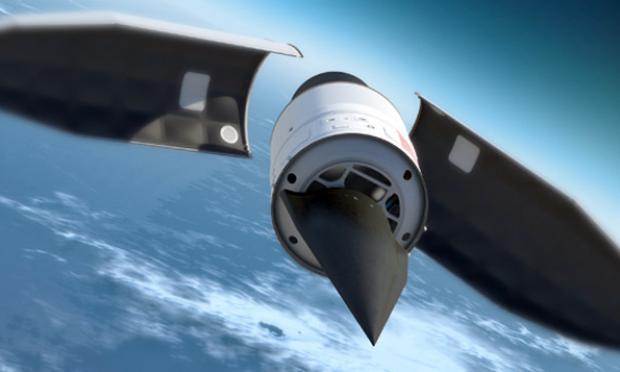As the hypersonic "race" heats up, with enormous pressure on the United States to demonstrate an operational hypersonic missile, the US military has announced its first deployment.
It should be noted that the announcement comes as China and Russia make "mammoth leaps" in their respective hypersonic programs, while the United States has yet to develop an operational hypersonic weapon.
With the US military's long-range hypersonic weapon well planned, US military officials are now considering how to prepare for next steps. A series of rigorous tests will precede the missile's placement in the US military.
"The United States military deployed its first Hypersonic Long Range Weapon (LRHW) in February," the Army announced in late March.

The long-range hypersonic weapon includes a large rocket booster, which carries the Common-Hypersonic Glide Body (C-HGB) into a nose cone without any power. The C-HGB, which "glides" at supersonic speeds as it falls toward its target, is released from the missile once it reaches significant altitude and speed.
A report further states that, the missile may climb to the top and remain just beyond the Earth's atmosphere and out of range of air defense and missile defense systems, making it too late to react.
Hypersonic missiles can fly five times faster than the speed of sound and have complex and varied flight paths, making them difficult to intercept. They also fly, much higher than subsonic missiles but much lower than intercontinental ballistic missiles, in an area where many countries do not have enough tracking coverage.
The LRHW was launched during exercise Thunderbolt Strike, to test the full capabilities of the new technology. It was deployed 3,100 miles from Joint Base Lewis-McChord at Cape Canaveral in Florida.

“Our Soldiers processed real missions, with real data, in real time, to produce real results to learn lessons and build readiness. We train the way we will fight, and our Soldiers are ready to develop and use this critical capability going forward,” said Maj. Gen. Bernard Harrington, 1st MDTF commander.
Undoubtedly, the operational operation of this new weapon will provide the US with both a deterrent capability and a strategic conventional strike capability.
Hypersonic missiles can reach the top of the Earth's atmosphere and remain out of range of enemy air defense systems, which will not be able to operate and provide effective protection.
Both of the missile's subsystems, (LRHW and C-HGB) are under development by Sandia National Laboratory, which is under the US Department of Energy.
The US Missile Defense Agency is also involved in the development of the system. The C-HGB warhead will enter service with three branches of the US armed forces: Army, Air Force and Navy.

The missile will be launched from a towed vehicle (TEL), which will carry two such missiles. The TEL will be a modified M870 launcher of the Patriot system and will be towed by an Oshkosh M983A4 HEMMT 8×8 truck, while the fire control system will be the standard used by the US, for missile units and artillery.
According to RCCTO officials, the LRHW system is expected to be delivered to the US military by the end of 2023.




